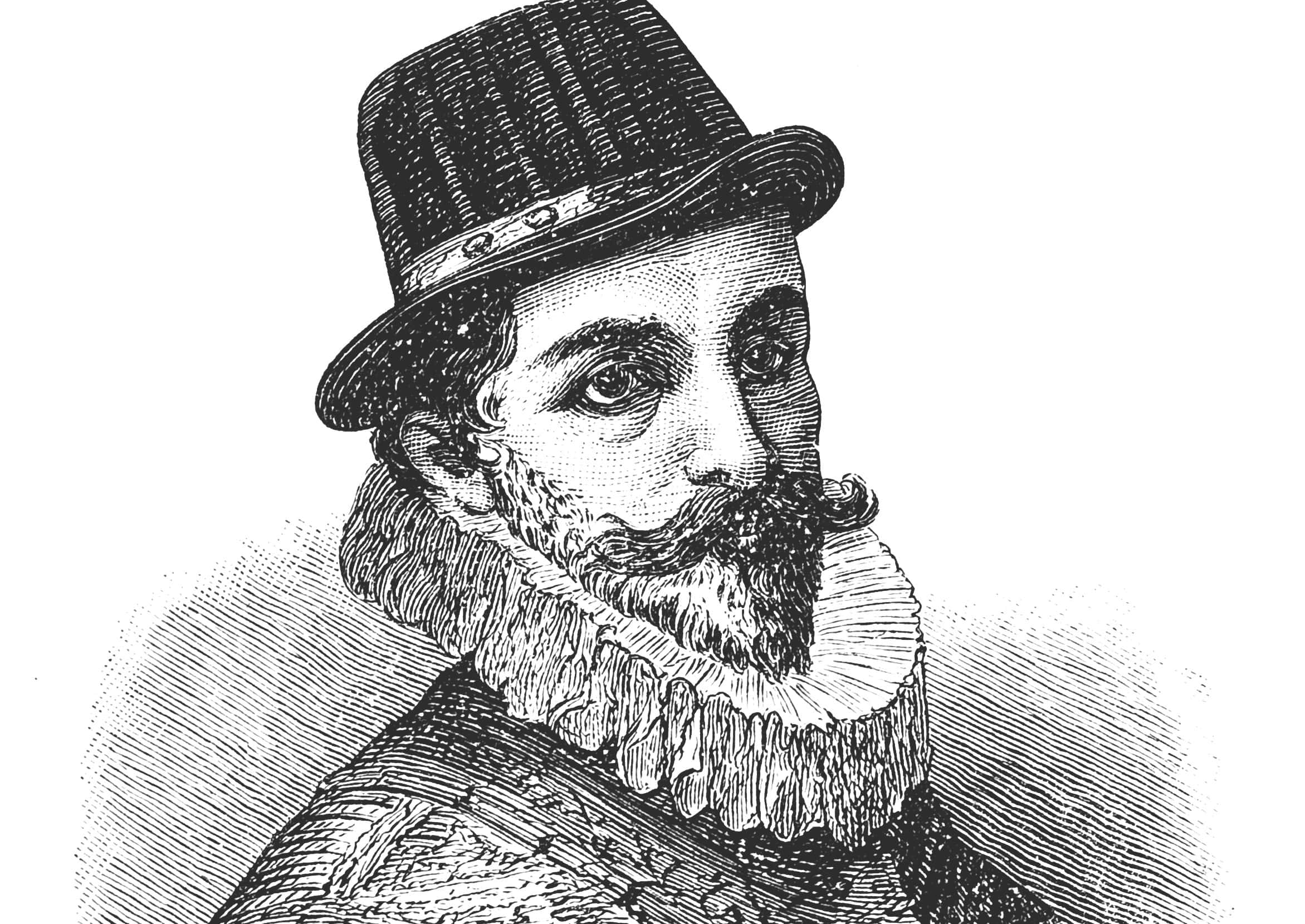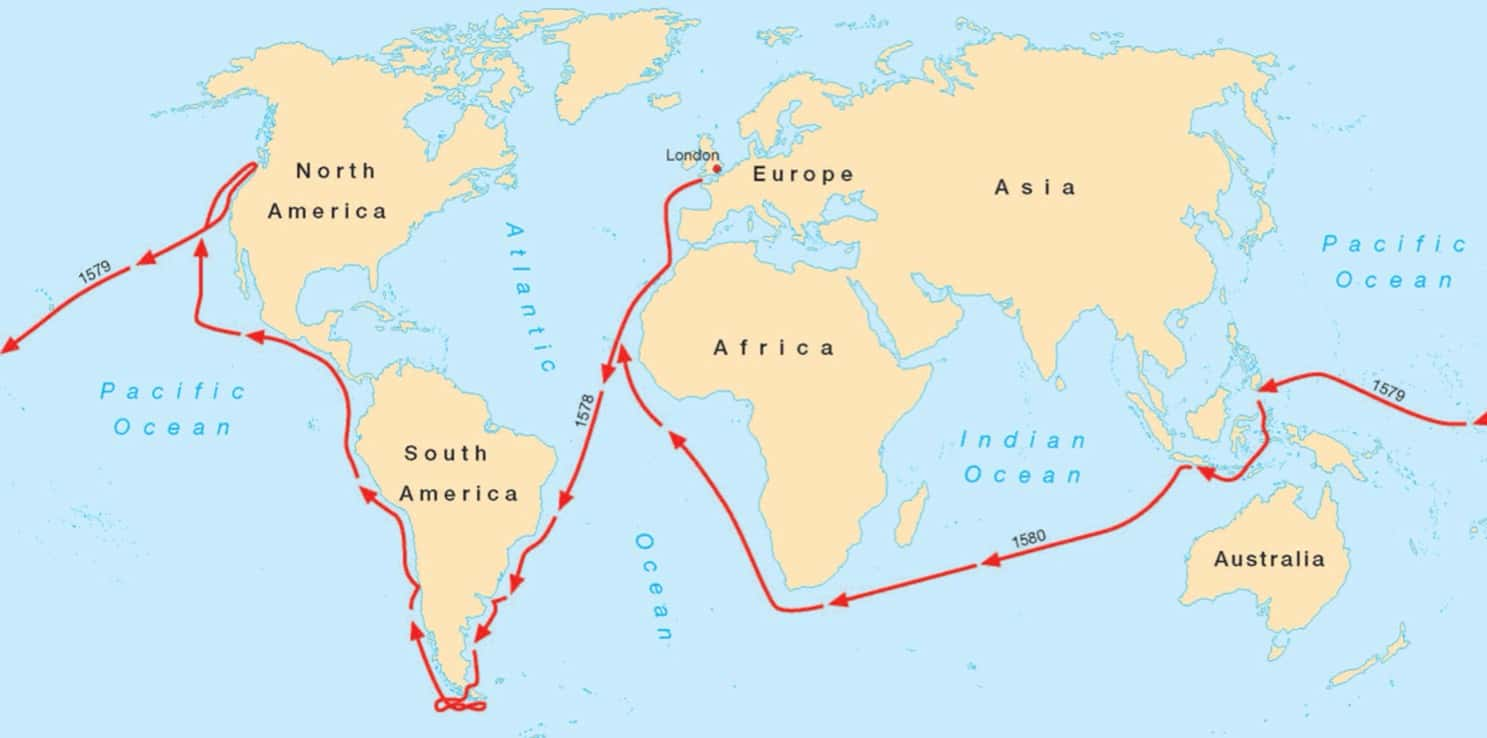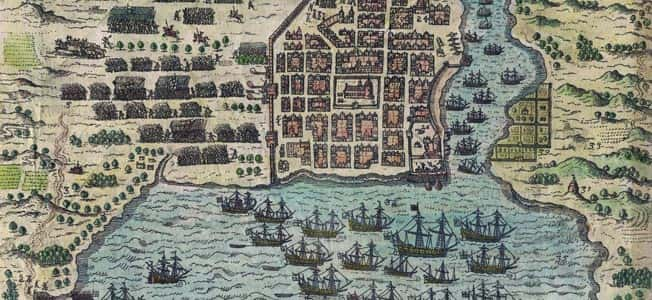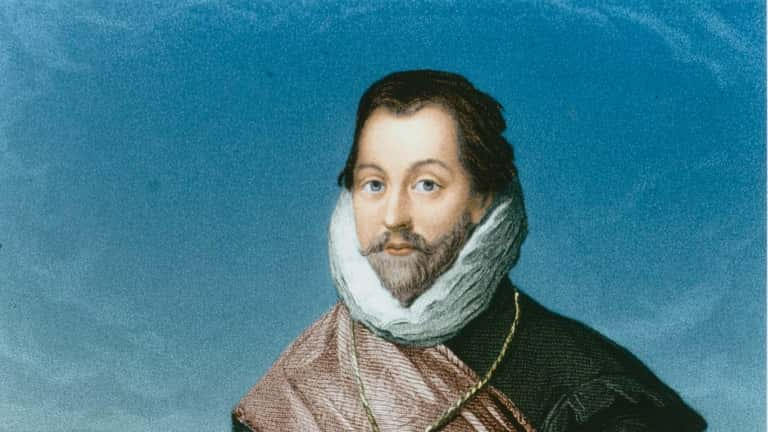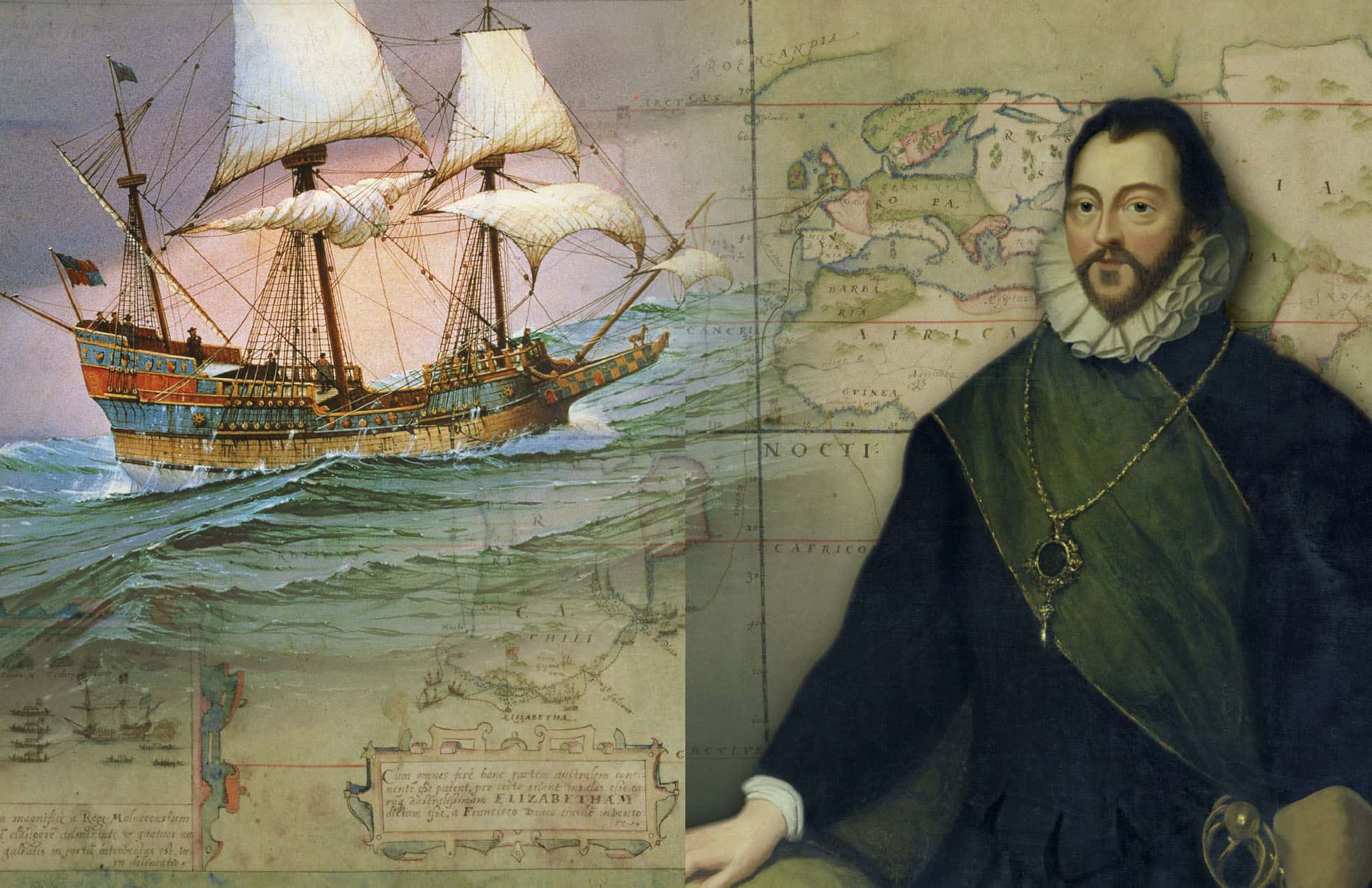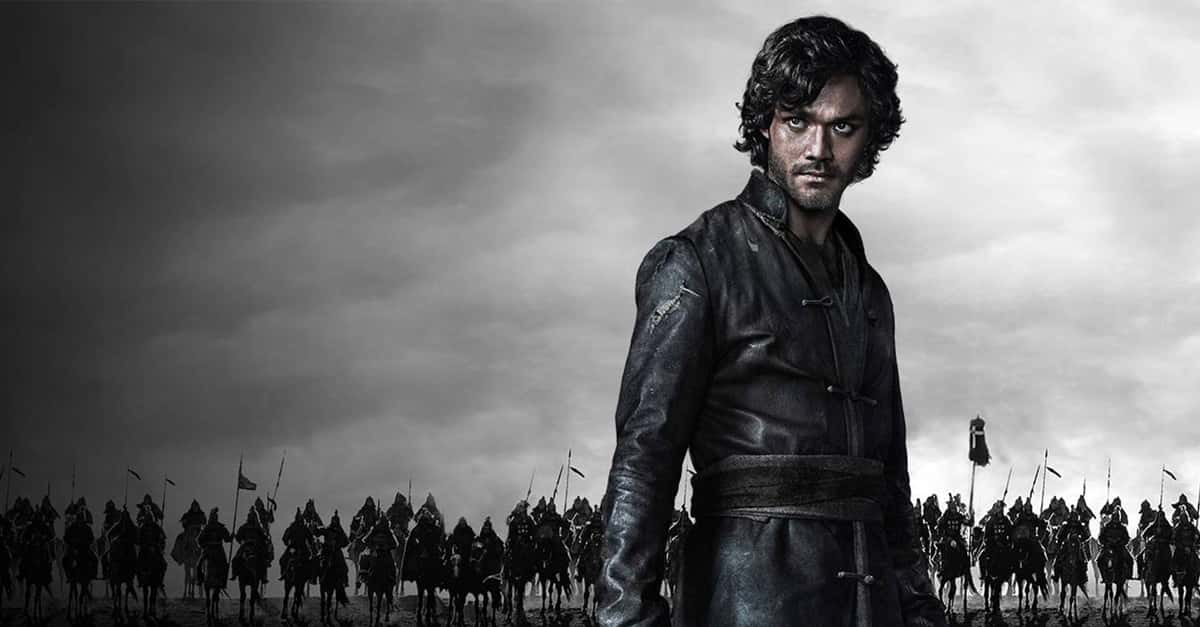There are some rogues throughout history whose legacies are particularly divisive. Some despise them, others idolize them. Francis Drake was one of those rogues; he was a man born for the sea, which is where he completed his most legendary exploits. Drake was a sea captain who indulged in both privateering for the English and exploring the globe in their name as well. Of course, England’s enemies, particularly the Spanish, grew to loathe Drake for the former actions, considering him a despicable pirate. So what exactly made up Drake’s life? How did he come to be so loved and hated at the same time? What exactly where his accomplishments? Find out more below!
 Tavistock Books
Tavistock Books
Sir Francis Drake Facts
42. How Old Are You?
Even to this day, we have no idea when Drake was born. Guesses on his birth year (based on artifacts or historical hearsay) include 1540, 1539, and 1544. What is known is that he was born in Tavistock, England.
41. Faithful Father
Drake’s parents were Edmund and Mary Drake. Edmund was a farmer who later became a deacon “to minister the men in the King’s Navy.” Edmund eventually became the vicar of Upnor Church.
40. A History of Hitching
Drake was married twice in his lifetime. In the summer of 1569, he wed Mary Newman in Plymouth. This marriage lasted until her death in 1581. Around two years later, Drake married Elizabeth Sydenham, whose father was the High Sheriff of Somerset. Sydenham outlived Drake, eventually remarrying to Sir William Courtenay of Powderham, the Earl of Devon. There is no record that Drake ever had children with either of his wives.
39. Bang the Drum Proudly
According to popular legend, Drake took a snare drum with him when he circumnavigated the globe. Later, the drum made its way to Buckland Abbey, and the legend decreed that if England was ever in great peril, beating the drum would summon Drake to his country’s defense once again. Known as Drake’s Drum, it has become a very important symbol in English folklore and their history. It was said to have been beaten when a captured Napoleon Bonaparte was brought to Plymouth, and also when the First World War started in 1914.
 Plymouth Museums Galleries Archives
Plymouth Museums Galleries Archives
38. My First Brush with the Sea
When Drake was a youth, he was apprenticed to a shipmaster who was involved with sea trade. Sailing his barque, the master would bring goods to and from France. Drake struck such a good impression on his master that he viewed Drake as the son he never had. We’re not wildly speculating there, either; the shipmaster had no family of his own, so he bequeathed his barque to Drake in his will!
37. Cheaper by the Dozen
As was more common back then, Drake was the oldest of twelve children. Incredibly, they were all boys. This means either Drake had sisters who were undocumented for some sexist reason or other, or else Mrs. Drake was astonishingly consistent when it came to childbirth.
36. Controversial Cousins
In addition to his eleven brothers, Drake was second cousin to Sir John Hawkins and sailed with him numerous times. In case you’re wondering who Hawkins is, he is widely considered to be the first Englishman to become heavily involved in the slave trade. Drake followed closely behind him on that count as well.
35. Where in the Ocean is Francis Drake?
Before his death, Drake requested to be buried at sea in his suit of armor. His coffin was lined with lead and dropped into the sea several miles from the coast of Panama. Drake’s coffin and remains have never been found, despite numerous diving expeditions to solve that mystery.
34. The First of Many
Drake first sailed to the Americas in 1563, while he was sailing with Sir John Hawkins’ fleet. Spoiler alert: It wouldn’t be the last time either.

History's most fascinating stories and darkest secrets, delivered to your inbox daily.
33. Noble Connection
Drake was said to have been named after his godfather. This man was none other than Francis Russell, the second Earl of Bedford.
32. Follow the Treasure
Drake’s first independent initiative came about in 1572, when he led a raid against what the English called the Spanish Main (the Gulf of Mexico and the Caribbean sea). Gold and silver coming from Peru would be taken onto land at the Isthmus of Panama, dropped off at Nombre de Dios, brought to ships in the Caribbean, and transported back to Spain across the Atlantic from there. This, naturally, proved too much for a self-respecting pirate to resist.
31. We Band of Brothers
With such a prize awaiting them, you would expect Drake to have a sizable army and fleet with him when he left Portsmouth on the 24th of May 1572. However, Drake only had two small ships with him; the 70-ton Pascha and the 25-ton Swan. The combined crews of both those ships totaled 73 men!
30. From Captain to Right Honorable
Given all the time he spent at sea, you wouldn’t think that Drake would have time for anything else. However, that didn’t stop him from entering politics. After finally coming home from his long voyage around the world, Drake joined the parliament of Queen Elizabeth I in early 1581. During that time, he represented the Camelford constituency. We’d question how qualified he could have been for that role, but then again, how many politicians are?
29. A Bit More Relevant Then?
Of course, joining parliament wasn’t enough for Drake. In the fall of that same year, 1581, Drake also became the mayor of Plymouth, the port town from which he’d first sailed to circumnavigate the globe.
28. And so a Life Ends
While we may never know Drake’s exact date of birth, we do know his exact date of death. Drake died of dysentery on the 28th of January, 1596 in Portobelo, Panama.
27. Around the World in Three Years
From 1577 to 1580, Drake embarked on a circumnavigation of the world, only the second one ever accomplished by that point. Ferdinand Magellan may have beaten him to the punch, but Drake managed to survive the entire journey and make it home, something Magellan couldn't claim—he was killed in a conflict in the Philippines and his crew was forced to carry on without him.
26. The Birth of a Myth
Most people have heard of the mostly false trope of pirates taking heaps of gold and silver and just leaving it on an island, buried and forgotten except through a map. As untrue as this myth usually is, it does have a few roots in genuine history, including one involving Drake. In 1573, while he was privateering in the Spanish Main, Drake and his band captured 20 tons of gold and silver near Nombre de Dios. However, they were unable to bring it all back with them (plus they were forced to go on the run from the Spanish authorities in the area) so most of the treasure was buried to prevent the Spanish from taking it back.
25. The English Rogue
Surprisingly, despite hailing Drake as a hero for his daring raids on the Spanish Main in the early 1570s, England signed a truce with Spain shortly after Drake’s return from to England. This meant that the English couldn’t officially acknowledge Drake’s actions, leading him to being viewed as the lowest of low pirates in Spain. Somehow, we don’t think Drake minded very much what the Spanish thought of him.
24. It’s So Beautiful…
During his raids on the Spanish Main, Drake managed to pull off a surprising first when it comes to world records. While he was in Panama, Drake became the first Englishman to view the Pacific Ocean. He would famously comment that he hoped that an Englishman would also sail it one day, which Drake himself would do years later (more on that down the list).
23. Stuff it, Spain!
After Drake’s triumphant return to England, he was knighted by Queen Elizabeth I on board the Golden Hind. However, Elizabeth didn’t actually dub Drake herself; this was done by a French diplomat named Marchaument, who was in England trying to negotiate a marriage between Elizabeth and the Duke of Anjou. While Elizabeth didn’t end up marrying the duke, she performed a bit of subtle politics by having the French diplomat take such an active part in knighting Drake. The implication (and subtle message to Spain) was that France supported Drake’s actions while sailing around the world, and also endorsing his attacks on Spain during that voyage.
22. Tis a Grand Day for Sailing!
The fleet which Drake took with him from Plymouth to sail around the world consisted of five ships with a combined manpower of 164 seamen. Drake’s flagship was initially called the Pelican but would later be rechristened with its more famous name, the Golden Hind.
 Youtube
Youtube
21. Robbing Peter to Trade with Paul
While he sailed with Sir John Hawkins, Drake would raid the African coast, stealing cargoes of slaves from Portuguese towns and ships. The slaves, meanwhile, would be sold to Spanish plantations in the New World. Like so many of the European "heroes" of this era, a closer look seriously puts that title into question.
20. In the Name of Francis
In the 1920s and 1930s, Drake’s legacy was used to con thousands of people out of money! In a move worthy of Charles Ponzi himself, Oscar Hartzell convinced people that the legendary fortune acquired by Drake was being kept for safekeeping by the British government. Hartzell also added that anyone who shared Drake’s surname could get a share of that treasure, and selflessly offered to represent them in this cause.
19. Sheer Willpower
Hartzell’s scheme continued for years, and it wasn’t undone until Drake himself intervened—metaphorically, of course. When Hartzell was put on trial for fraud, a copy of Drake’s will was read out for the record. This sealed Hartzell’s fate, and he was imprisoned, presumably while the ghost of Drake laughed and gave him a “Nice try!” sort of shrug.
18. I Only Hate the Spanish
Despite having begun his adult sailing career with Sir John Hawkins in the slave trade, Drake would go on to lead crews which featured several former slaves who had escaped from the Spanish. But given that Drake was the enemy of their enemies, we’re not too surprised that these former slaves joined up with him!
17. Seriously, All Spanish Haters Welcome
It wasn’t just former slaves that Drake made common cause with to give the Spanish a bloody nose; he also worked hand in hand with French pirates! Drake sailed alongside many of them, including one well-known pirate named Guillaume Le Testu. Le Testu would ultimately be captured while fighting alongside Drake and beheaded by the Spanish for his piracy.
16. Winter Voyage Hazards
Despite the success of Drake’s circumnavigation, it had begun with complete disaster. Drake initially set sail on the 15th of November 1577, but the weather was so bad that his fleet was forced to stop at Cornwall. Limping back to Plymouth for repairs, the fleet tried again on the 13th of December instead.
15. Friends to the End
Throughout the trials and tribulations that they faced, Drake and Sir John Hawkins remained partners to the end of their lives. Hawkins was with Drake on his final voyage which resulted in his death in Panama.
14. The Cadiz Raid
One of Drake’s finest hours (or one of his most infamous actions, depending on if you’re Spanish or English) occurred in 1587. He led a fleet into Cadiz and Corunna, two of Spain’s biggest ports. The double raid (and occupation of the harbors) led to more than 37 Spanish ships being destroyed. The invasion of the Spanish Armada against England was actually delayed for a year because of this pre-emptive strike!
13. Wanted: Dead or Alive
Drake was so hated by the Spanish in his lifetime that King Philip II was said to have offered a reward of 20,000 ducats for Drake’s capture or death. For those of you looking confused, 20,000 ducats back then would translate to about $8 million in modern money!
12. I Have a Note!
As mentioned before, Drake became a member of parliament. Also, he was too busy sailing and doing literally anything else to actively take part in government on most occasions. However, Drake was permitted a leave of absence thanks to his “necessary business in the service of her Majesty.” Sounds like a good excuse to us!
11. There Can Be Only One
Of all the ships that Drake took with him across the world, only two of them weren’t destroyed or sunk. The Elizabeth also had to quit the voyage and head home after it became too damaged to continue. The Golden Hind was the only ship which managed to make the complete voyage.
10. Mythbusting an Anecdote
There is a famous story involving Drake’s actions during the repelling of the Spanish Armada in 1588. Before battle on one occasion, Drake is said to have been playing a game of bowls. When the Vice Admiral was alerted to the report of Spanish ships approaching, he is said to have laughed and declared that he had enough time to finish his game before beating the Spanish. This story, however, has little to no historical evidence to support it, which means it may be apocryphal.
9. Canadian Connection
Some historians have speculated that Drake landed somewhere in British Columbia while he was making his way around the world. Whether for that reason, or just to honor Elizabethan times, several mountains in British Columbia have been named in Drake’s honor. In particular, the tallest mountain on Vancouver Island is named Mt. Golden Hinde after Drake’s most famous ship.
8. The English Terror
Despite violent storms destroying most of his ships, Drake successfully entered the Pacific Ocean via the Magellan Strait. He spent his time there raiding Spanish towns and shipping, of course. Amongst his many prizes was a ship whose modern value was seven million pounds, and another galleon containing 26 tons of silver, 80 pounds of gold, and several jewels! No wonder the Spanish hated him so much!
7. Rich as Croesus and Happy as a Clam
If you’re wondering just how successful Drake was during his circumnavigation, consider this amazing fact: He only returned home with one ship, the Golden Hind, but the wealth he was able to carry back on that one ship was so valuable that half of it (which was what the crown was entitled to have) was worth more than Queen Elizabeth’s incomes for a year! No wonder Queen Elizabeth knighted Drake!
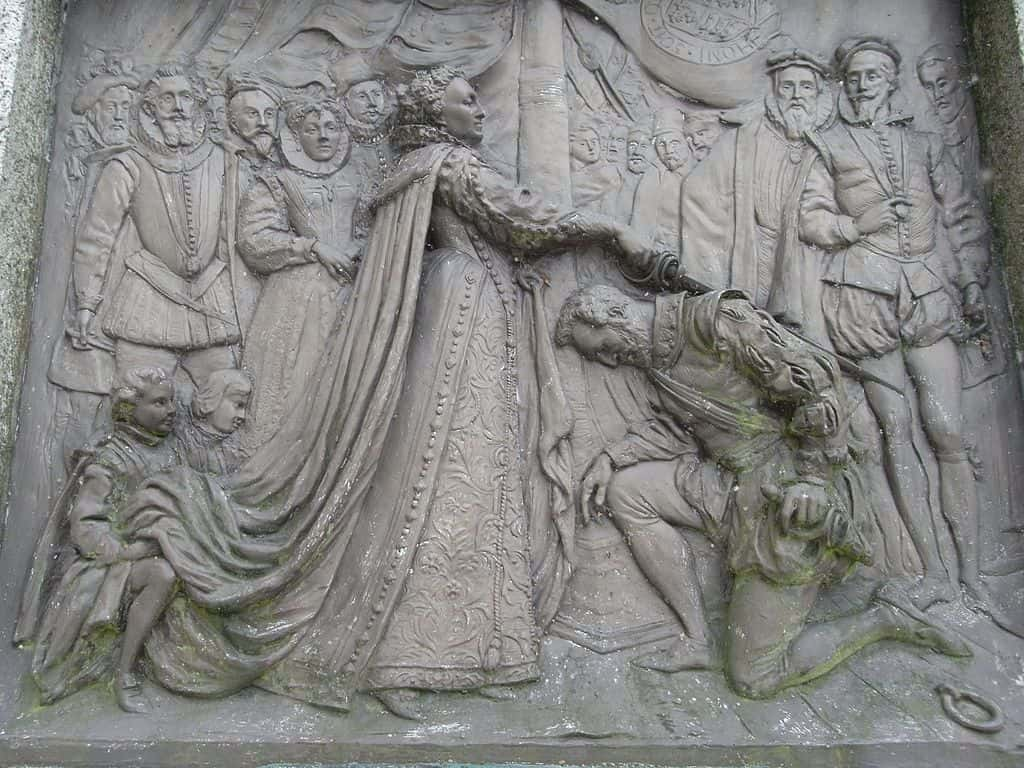 Pinterest
Pinterest
6. Mixed Record
Drake was made the Vice Admiral of the entire Royal Navy during the invasion of the Spanish Armada. One of his innovations while in charge was the use of fire-ships to break up the formation of the Spanish ships. However, Drake’s desire for loot and glory occasionally got in the way of his leadership. On one occasion, his ship managed to capture a Spanish ship which was carrying important funds. The downside was that Drake’s ship was in the process of guiding the rest of the English fleet at night, and when Drake went gallivanting off after that Spanish prize, he caused the rest of the English fleet to be completely thrown into disarray! Whoops!
5. For Love of Leader
Since Nombre de Dios was the town where the Spanish picked up the gold and silver from Peru, Drake and his band attacked it first on their 1572 voyage west. However, while the crew did manage to capture the town and seize the treasure, Drake was badly wounded in the fight. In an impressive display of loyalty to their leader, Drake’s crew abandoned the silver and gold to ensure that Drake survived his injuries.
4. Guilt by Association
One of the more infamous moments in Drake’s career took place in 1575 when he, along with Sir John Norreys, laid siege to Rathlin Castle, which stood on the small Rathlin Island off the coast of Northern Ireland. Norreys and Drake were instructed to get the surrender of the castle, but they went one step further than that. While Drake prevented any reinforcements from saving the castle, Norreys accepted the surrender of Clan MacDonnell, then proceeded to slaughter more than 600 of them, including children.
3. “Smaug” Would Later be Taken
You know you’ve become an infamous character among your enemies when they give you a nickname. The Spanish did just that for Drake. In a play on his name, they called him “El Draque.” He was also given the nickname “draco,” which means “dragon” in Latin. Given his love for loot and Spanish gold, it’s hard to disagree with that moniker!
2. You Just Made Yourself a Powerful Enemy!!
Drake’s lifelong feud with Spain is reported to have begun with an incident in 1568. While sailing with the fleet owned by John Hawkins, Drake sailed into a port in Mexico to resupply. However, while negotiations were taking place between the Hawkins fleet and the port authorities, Spanish ships attacked the fleet and sank all but two of the ships. Drake and Hawkins had to swim for their lives, with Drake being said to have vowed revenge against Spain. Safe to say he kept his word!
1. A Sinister Message
During the great circumnavigation, Drake and his ships stopped at the bay of Saint Julian in Argentina. Fifty years before, Ferdinand Magellan had executed several mutineers at that bay, and he’d left their bodies hanging from gibbets. Those same bodies were still there when Drake and his crew arrived. For his part, Drake took the opportunity to add another body to the grisly collection; he had a mutineer named Thomas Doughty beheaded (though his crime of mutiny has been hotly disputed by historians).







